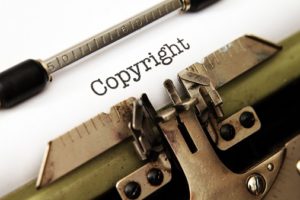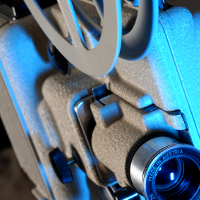 The U.S. Copyright Office released its long-awaited report on Section 512 of Title 17 late last week. The Report is the culmination of more than four years of study by the Office of the safe harbor provisions for online service provider (OSP) liability in the Digital Millennium Copyright Act of 1998 (DMCA). Fortuitously, the study period coincided with the launch of Scalia Law’s Arts and Entertainment Advocacy Clinic. Clinic students were able to participate in all phases of the study, including filing comments on behalf of artists and CPIP scholars, testifying at roundtable proceedings on both coasts, and conducting a study of how OSPs respond to takedown notices filed on behalf of different types of artists. The Office cites the filings and comments of Scalia Law students numerous times and ultimately adopts the legal interpretation of the law advocated by the CPIP scholars.
The U.S. Copyright Office released its long-awaited report on Section 512 of Title 17 late last week. The Report is the culmination of more than four years of study by the Office of the safe harbor provisions for online service provider (OSP) liability in the Digital Millennium Copyright Act of 1998 (DMCA). Fortuitously, the study period coincided with the launch of Scalia Law’s Arts and Entertainment Advocacy Clinic. Clinic students were able to participate in all phases of the study, including filing comments on behalf of artists and CPIP scholars, testifying at roundtable proceedings on both coasts, and conducting a study of how OSPs respond to takedown notices filed on behalf of different types of artists. The Office cites the filings and comments of Scalia Law students numerous times and ultimately adopts the legal interpretation of the law advocated by the CPIP scholars.
The Office began the study in December 2015 by publishing a notice of inquiry in the Federal Register seeking public input on the impact and effectiveness of the safe harbor provisions in Section 512. Citing testimony by CPIP’s Sean O’Connor to the House Judiciary Committee that the notice-and-takedown system is unsustainable given the millions of takedown notices sent each month, the Office launched a multi-pronged inquiry to determine whether Section 512 was operating as intended by Congress.
Scalia Law’s Arts and Entertainment Advocacy Clinic drafted two sets of comments in response to this initial inquiry. Terrica Carrington and Rebecca Cusey submitted comments to the Office on behalf of middle class artists and advocates, including Blake Morgan, Yunghi Kim, Ellen Seidler, David Newhoff, and William Buckley, arguing that the notice-and-takedown regime under Section 512 is “ineffective, inefficient, and unfairly burdensome on artists.” The students pointed out that middle class artists encounter intimidation and personal danger when reporting infringements to OSPs. Artists filing takedown notices must include personal information, such as their name, address, and telephone number, which is provided to the alleged infringer or otherwise made public. Artists often experience harassment and retaliation for sending notices. The artists, by contrast, obtain no information about the identity of the alleged infringer from the OSP. The Office’s Report cited these problems as a detriment for middle class artists and “a major motivator” of its study.
A second response to the notice of inquiry was filed by a group of CPIP scholars, including Sandra Aistars, Matthew Barblan, Devlin Hartline, Kevin Madigan, Adam Mossoff, Sean O’Connor, Eric Priest, and Mark Schultz. These comments focused solely on the issue of how judicial interpretations of the “actual” and “red flag” knowledge standards affect Section 512. The scholars urged that the courts have interpreted the red flag knowledge standard incorrectly, thus disrupting the incentives that Congress intended for copyright owners and OSPs to detect and deal with online infringement. Several courts have interpreted red flag knowledge to require specific knowledge of particular infringing activity; however, the scholars argued that Congress intended for obvious indicia of general infringing activity to suffice.
The Office closely analyzed and ultimately adopted the scholars’ red flag knowledge argument in the Report:
The Office went on to state that “a standard that requires an OSP to have knowledge of a specific infringement in order to be charged with red flag knowledge has created outcomes that Congress likely did not anticipate.” And since “courts have set too high a bar for red flag knowledge,” the Office concluded, Congress’ intent for OSPs to act upon information of infringement has been subverted. This echoed the scholars’ conclusion that the courts have disrupted the balance of responsibilities that Congress sought to create with Section 512 by narrowly interpreting the red flag knowledge standard.
Scalia Law students and CPIP scholars likewise participated in roundtable hearings on each coast to provide further input for the Copyright Office’s study of Section 512. The first roundtable was held on May 2-3, 2016, in New York, New York, at the Thurgood Marshall United States Courthouse, where the Second Circuit and Southern District of New York hear cases. The roundtable was attended by CPIP’s Sandra Aistars and Matthew Barblan. They discussed the notice-and-takedown process, the scope and impact of the safe harbors, and the future of Section 512. The second roundtable was held in San Francisco, California, at the James R. Browning Courthouse, where the Ninth Circuit hears cases. Scalia Law student Rebecca Cusey joined CPIP’s Sean O’Connor and Devlin Hartline to discuss the notice-and-takedown process, applicable legal standards, the scope and impact of the safe harbors, voluntary measures and industry agreements, and the future of Section 512. Several of the comments made by the CPIP scholars at the roundtables ended up in the Office’s Report.
In November 2016, the Office published another notice of inquiry in the Federal Register seeking additional comments on the impact and effectiveness of Section 512. The notice itself included citations to the comments submitted by Scalia Law students and the comments of the CPIP scholars. Under the guidance of Prof. Aistars, the students from Scalia Law’s Arts and Entertainment Advocacy Clinic again filed comments with the Office. Clinic students Rebecca Cusey, Stephanie Semler, Patricia Udhnani, Rebecca Eubank, Tyler Del Rosario, Mandi Hart, and Alexander Summerton all contributed to the comments, which discussed their work in helping individuals and small businesses enforce their copyright claims by submitting takedown notices pursuant to Section 512. The students reported on the practical barriers to the effective use of the notice-and-takedown process at particular OSPs. Two problems identified by the students were cited by the Copyright Office as examples of how OSPs make it unnecessarily difficult to submit a takedown notice. Accordingly, the Office called on Congress to update the relevant provisions of Section 512.
Two years after the additional written comments were submitted, the Office announced a third and final roundtable to be held on April 8, 2019, at the Library of Congress in Washington, D.C. The purpose of this meeting was to discuss any relevant domestic or international developments that had occurred during the two prior years. CPIP’s Devlin Hartline attended this third roundtable to discuss recent case law related to Section 512, thus ensuring that CPIP scholars were represented at all three of the Office’s roundtables.
CPIP congratulates and thanks the students of Scalia Law’s Arts and Entertainment Advocacy Clinic for their skillful advocacy on behalf of artists who otherwise would not be heard in these debates.
 By Mandi Hart
By Mandi Hart